
Tesla Cybertruck Driving Report: Bold Design and a Revolutionary Steering Experience
Traffic in Los Angeles presents the usual sight: congestion during rush hour. Car after car, across five lanes in each direction, the traffic crawls southward—sometimes faster, sometimes slower. Pickups, SUVs, sedans. Black, white, blue, silver. GMC, Ford, Toyota, Honda, BMW dominate the scene. But during our drive, we notice that the landscape has changed since our last visit in 2023—many more Tesla Model 3, Y, S, and X vehicles are visible, and Rivian’s offerings, both as pickups and with fixed roofs, are also far more common.
Yet even amid this mix of shiny new and weathered old vehicles, one imposing machine stands out in the setting sun. The Tesla Cybertruck immediately draws our eyes from the taxi: a wide, continuous light strip, angular in shape, and a large black windshield. We let the behemoth overtake us, and it is unlike anything else on the road: the Tesla Cybertruck looks like a spaceship amidst traffic. Roughly 15 hours later, we take delivery of our Cybertruck and spend two days testing it on the roads around Los Angeles: driving, charging, assistance systems, connectivity—and, most importantly, standing out.
Minor Hurdles at the Start
The Tesla is rented from an agency, and the owner texts us politely and helpfully, providing instructions and sending a video on how to operate the Cybertruck: “While I’m sure you’re familiar with driving a Tesla, here are a few important points to keep in mind when driving the Cybertruck, so you can fully experience the incredible technology it offers.” We’ll soon find out if he’s right. He also warns us that we’ll attract attention: people will photograph and film us. “Please enjoy it—also bring some dark sunglasses because everyone’s going to stare and take pictures and videos of you. Enjoy, sir.” On the morning of the handover, we receive a link via iMessage: “I’m sharing my Tesla with you. Tap the link to accept.”
We already have the US version of the Tesla app installed but are logged in with a German Tesla account. That doesn’t work. So we create a US Tesla account and try again. The app notifies us: “Success. Vehicle added”—it seems to have worked. We then see “Rusty”—the name the owner gave it—displayed in the app as expected: vehicle image, range, location, phone key. Time to pick up the car. The app shows the vehicle’s location, and the owner had sent us a photo via iMessage to ensure we find it. We head south through the Californian metropolis in the BMW i7 xDrive60, leaving the boulevard and turning into a “small” residential street.
There it stands, on a parking lot in front of an iPhone repair shop, under the trees. The scene feels surreal, as if a UFO had landed—a foreign object in our familiar world. This vehicle is unlike anything we’ve seen or driven before. Surprisingly, it appears smaller than expected, though that doesn’t mean it’s actually small—quite the opposite. The windows are fully tinted black, and the body is made of bare stainless steel, allegedly three millimetres thick and manufactured using aerospace technology. The slightly tarnished, spotted surface explains why its owner calls it “Rusty”—the Rusty One. Though Tesla advertises it as an “exoskeleton made of stainless steel.” Matching black components add the necessary contrast and appealing design. The four doors are just as angular and edgy as the rest of the body.

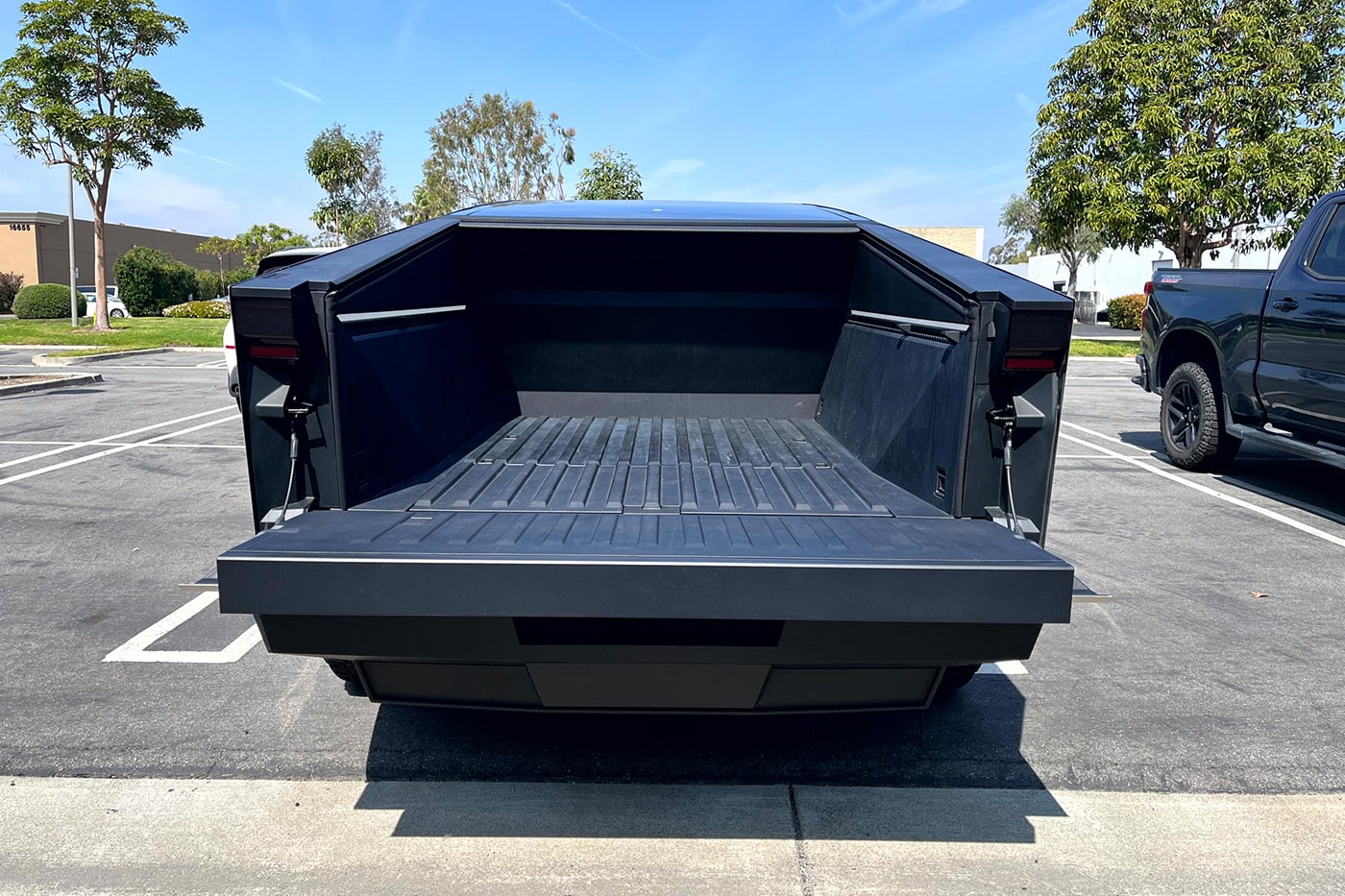

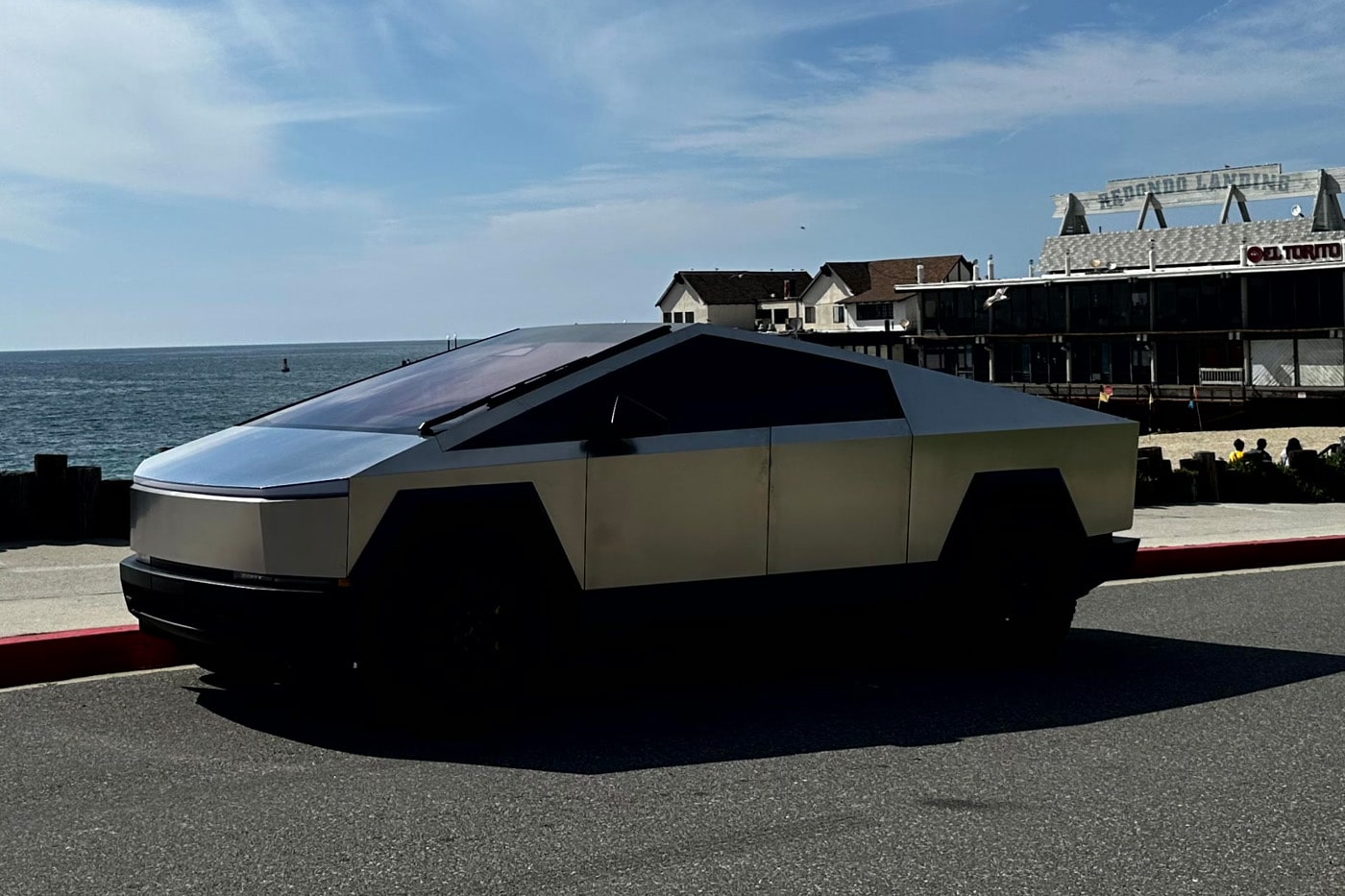
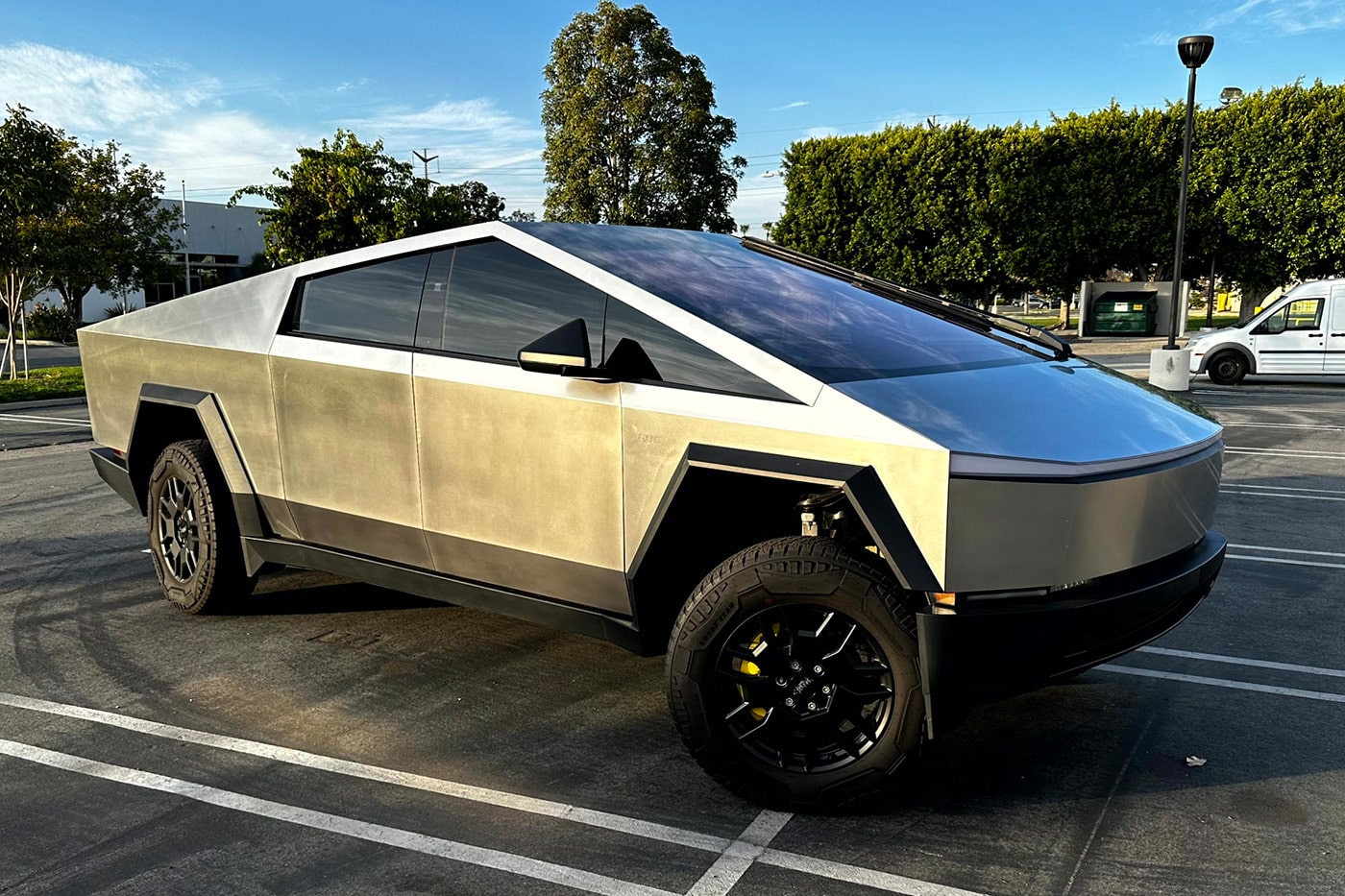

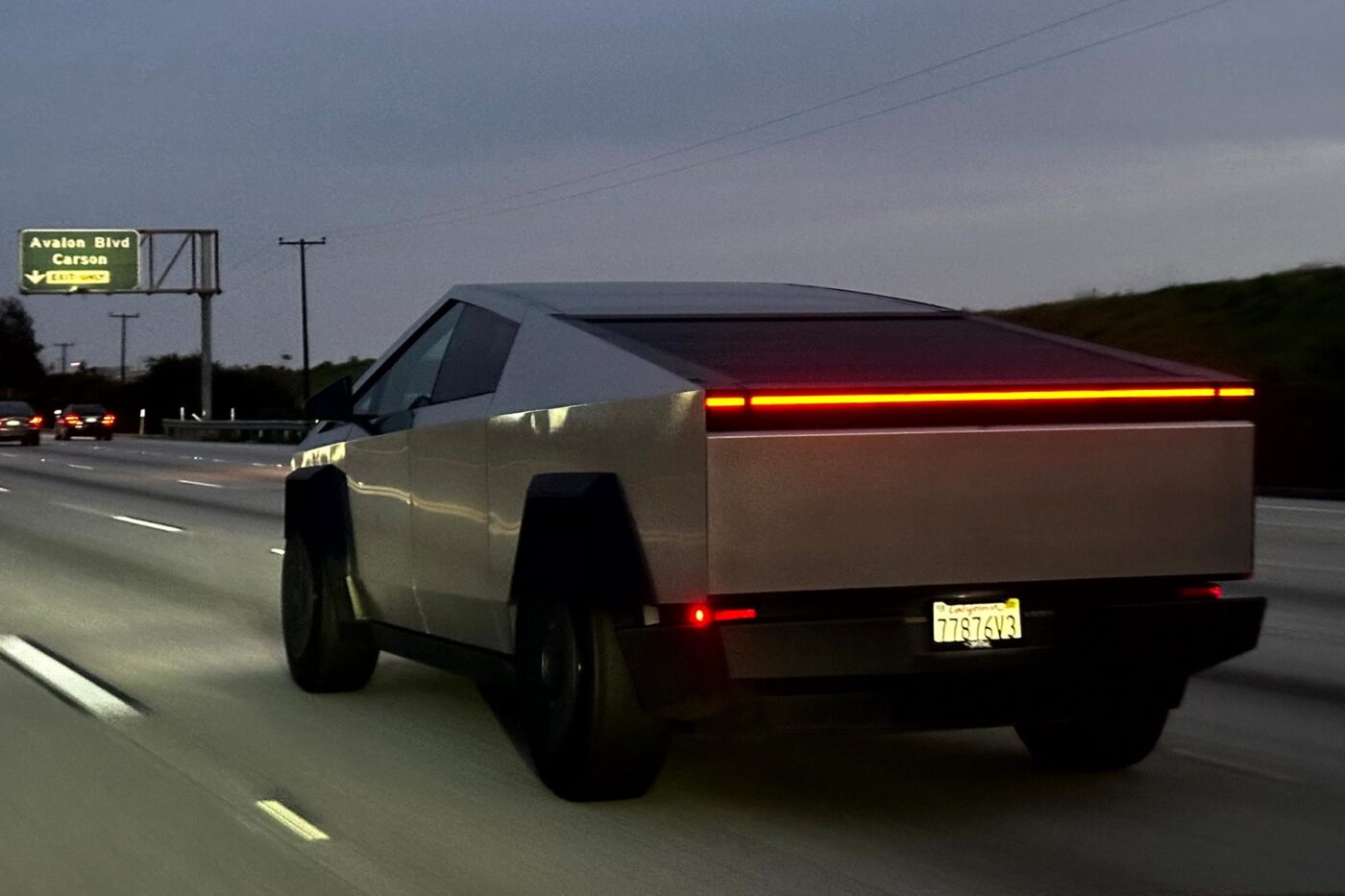
Something as traditional as door handles doesn’t exist. The vehicle sits on black 20-inch rims, and the accompanying Goodyear off-road tyres are a modest LT285/65R20/123/120H in size (the original spare tyre, including tools, can be purchased for $1,250). Behind them, a striking yellow brake calliper is visible. The wheel hubs feature plaques with the engraved Cybertruck logo. A rear window? Not visible. All we see is the black cover (tonneau) of the pickup bed. A large rearview camera in the middle of the light strip at the back catches the eye—apparently an indispensable feature. A large, recessed button is located in the B-pillar. Pressing it opens the door slightly—fully electric opening, as in the BMW i7, is not possible here.
The interior resembles what we’re used to from Tesla, somewhat reminiscent of the Model S Plaid—just everything a size larger. Instead of the yoke “steering wheel” from the Model S, the Cybertruck features an octagonal, very slim steering wheel placed in front of a white-leather “instrument panel.” To the right is an 18.5-inch central display with the familiar Tesla user interface, known from the Model 3 Highland and Model S Plaid. The front seats are black leather, and the rear features a three-seater bench. However, there is no interior mirror. Rear passengers have access to a 9.4-inch display in the centre console, which can be used to control the climate, Netflix, and audio. Overall, the design aligns with the current Tesla standard seen in the Model S and Model X.
Enough looking—we want to drive. The driving mode can be selected either via the central display (pushing the car forward)—similar to the Model 3 Highland or Tesla Model S Plaid—or, much cooler, by using the capacitive buttons “P N R D” embedded in the roof where the interior mirror would normally be. With a foot on the brake and a finger on “D,” we’re off. The first steering input makes it clear what’s new here: the Tesla features “steer-by-wire” steering combined with rear-wheel steering. Steer-by-wire means there’s no mechanical connection (via a steering linkage) between the steering wheel and the front axle. The steering is purely electronic. The first few metres feel unusual—very small “steering travel” with a significant steering effect. It takes a few minutes to get used to. The first parking attempts in a restaurant car park prove challenging, and a restaurant employee on break films the action. Parking reveals some difficulties with steer-by-wire: especially at full lock, the vehicle isn’t as precise to steer as we’re used to with conventional steering systems. The greater the steering angle, the less precise the steering feel. After the first successful attempts, we quickly adapt to the “driving-steering feel,” which impresses us greatly. The constant “turning” of the steering wheel is eliminated. How quickly we’ve adapted—or, put another way, how little we miss it because it’s less convenient—becomes apparent when we drive the BMW i7 again.
Over the next few days, we’re filmed and photographed often—at traffic lights, in traffic jams, on the highway, while parking. Basically, all the time. Many people also smile at us, give us thumbs up, and talk to us. The car seems to excite people in California. “Is that a Tesla?” “Yes, that’s Tesla’s Cybertruck.” “Oh really? Such a cool car. Can I take a photo?”
High Consumption, Large Battery
Our consumption averages 39.9 kWh per 100 miles, which equates to 24.9 kWh/100 km. To be fair, we mostly drove on highways at the allowed 65 miles per hour, or around 100 km/h. The results would likely differ in Europe. Edmunds.com’s range test achieved a real-world range of 334 miles (537 kilometres) with a consumption of 45.1 kWh per 100 miles. The US Environmental Protection Agency (EPA) certifies the Cybertruck with a range of 318 miles (512 kilometres), which was exceeded in the real-world street test.
Compared to other vehicles, these are already impressive figures: the Model 3 Highland achieves a maximum of 338 miles (544 kilometres) on Edmunds.com, while the Model S Plaid manages 345 miles (555 kilometres). However, both have significantly smaller batteries and lower consumption, simply due to their size and weight. The Cybertruck’s competition shows similar trends: the GMC Hummer EV achieves 390 miles (628 kilometres), as does the Rivian R1T with Dual Motor and Max Pack. The Ford F-150 Lightning reaches a maximum of 345 miles, but again, all these vehicles have batteries larger than 100 kWh to compensate for their consumption.
To recharge the high-voltage battery, we head to a Supercharger. Although the Cybertruck is equipped with an 800V electrical system, it can currently only charge at Tesla Superchargers. Charging at other providers using a CCS1 to NACS adapter is not possible. At a Supercharger V3, we start charging at four percent state of charge (SoC). Within seconds, we reach a charging power of 250 kW, which is maintained until about 20 percent. This is followed by a plateau at around 220 kW up to 28 percent. From there, the charging power steadily decreases: at 39 percent, it drops below 150 kW; at 60 percent, it’s down to 96 kW; and at 80 percent, it’s 80 kW. Charging from 10 to 80 percent SoC takes just under 40 minutes, which corresponds to about 85 kWh of recharged energy according to the Tesla onboard computer. The bill, however, shows two additional kilowatt-hours. The charging curve thus aligns with Tesla’s typical profile, albeit with slightly higher energy consumption.

When it comes to driver assistance systems, however, the spaceship is not quite up to date: the Cybertruck only had a “standard” active cruise control that maintains distance. The full Tesla Autopilot functionality, as seen in the Model S Plaid, is unfortunately absent. Speed limits are recognised, and the distance is dutifully maintained, but lane-keeping requires manual steering. This is disappointing and not what we expected.
At first glance, the interior quality appears more premium than in previous Tesla models. However, a closer look and feel reveal noticeable differences compared to established premium brands. Despite our Cybertruck having only around 1,000 miles on the clock, a loud creaking noise is audible from the driver’s seat when too much pressure is applied to the side bolsters. The same happens when leaning too heavily on the centre armrest. It remains to be seen what wear and tear the leather will show after a few years—the leather quality is not truly premium.
What we’ve never experienced with a Tesla—and encountered for the first time—were connectivity issues: the vehicle repeatedly failed to establish an internet connection, despite the central display indicating sufficient mobile reception. This meant neither the navigation map nor the traffic display worked. Using the iPhone in the centre console for route guidance via Google Maps? A first for us in a Tesla. Not a major issue, but annoying: the connection to the app was also sporadically unavailable, which was particularly frustrating during Supercharging, as we couldn’t see how much longer the car needed to charge or its current charging progress. This is definitely not something we’re used to with Tesla!
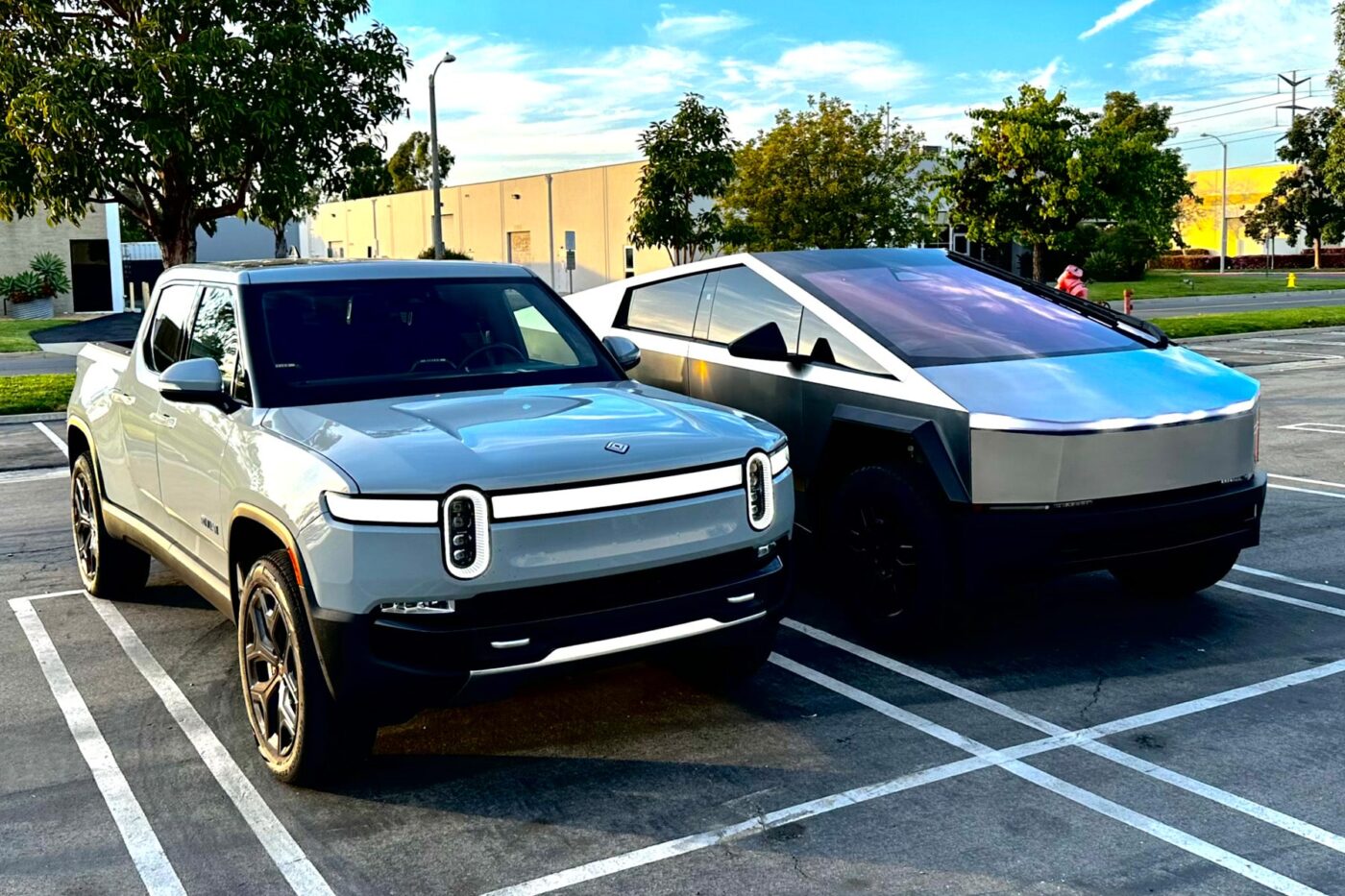
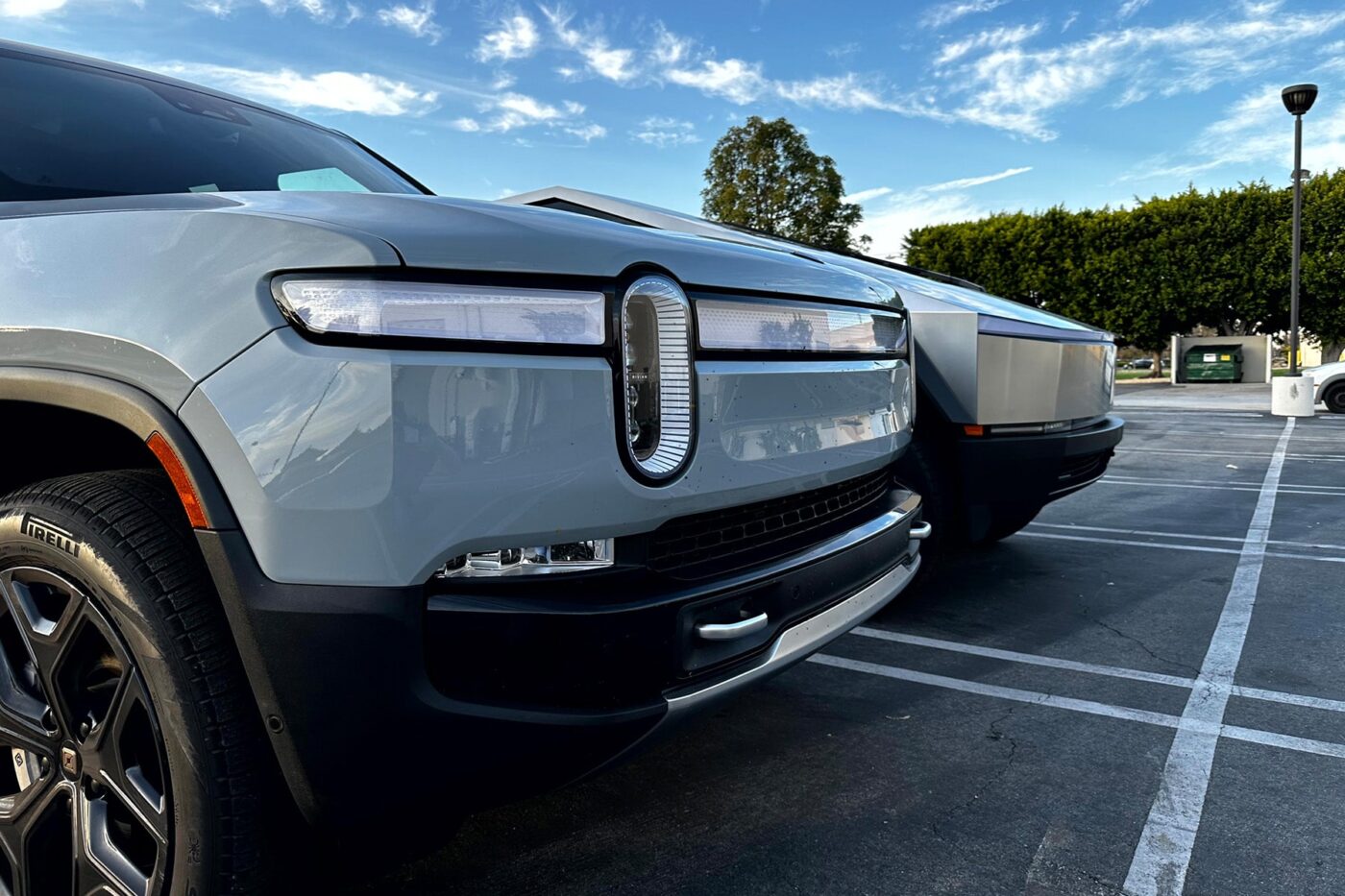
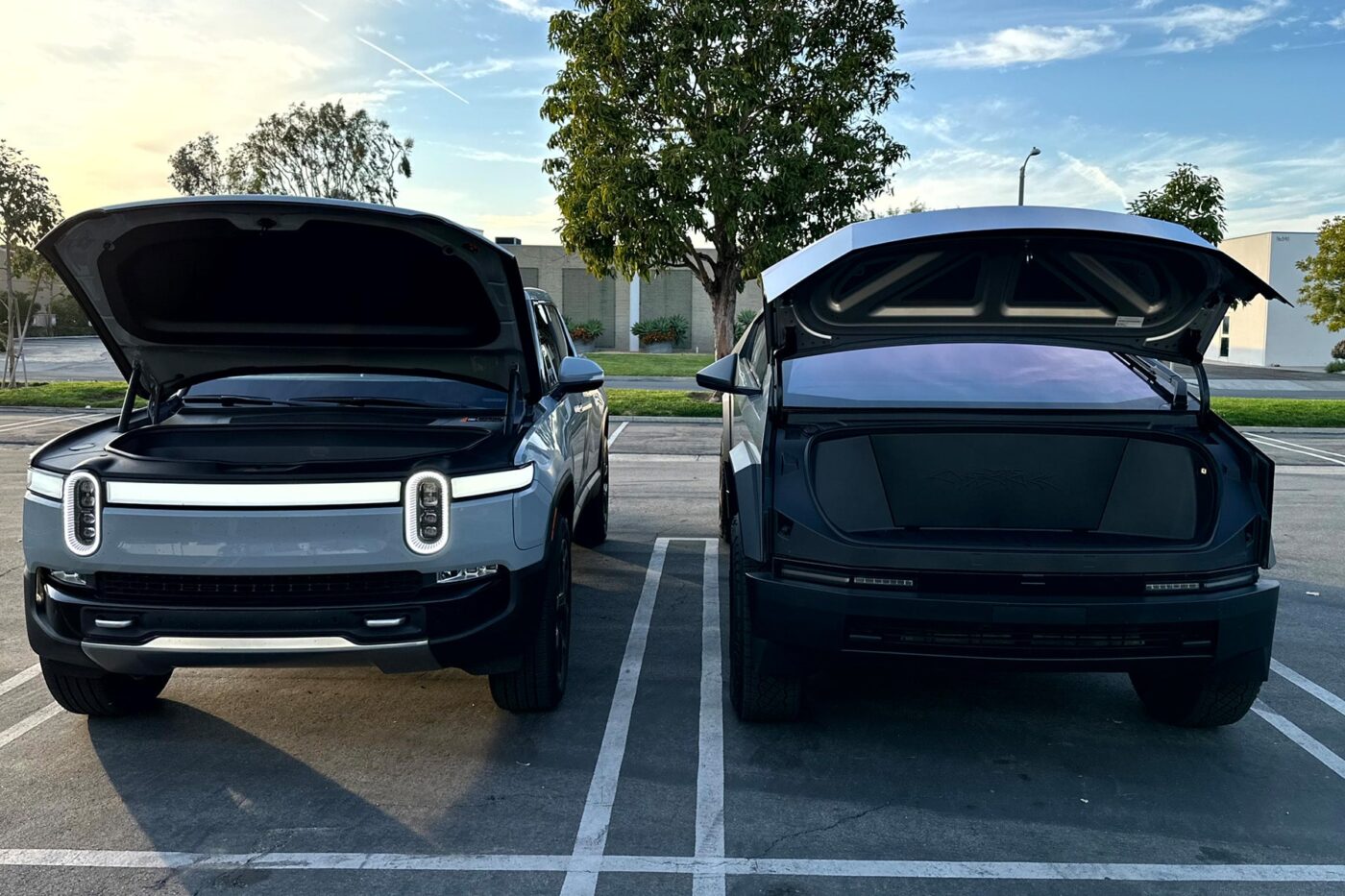


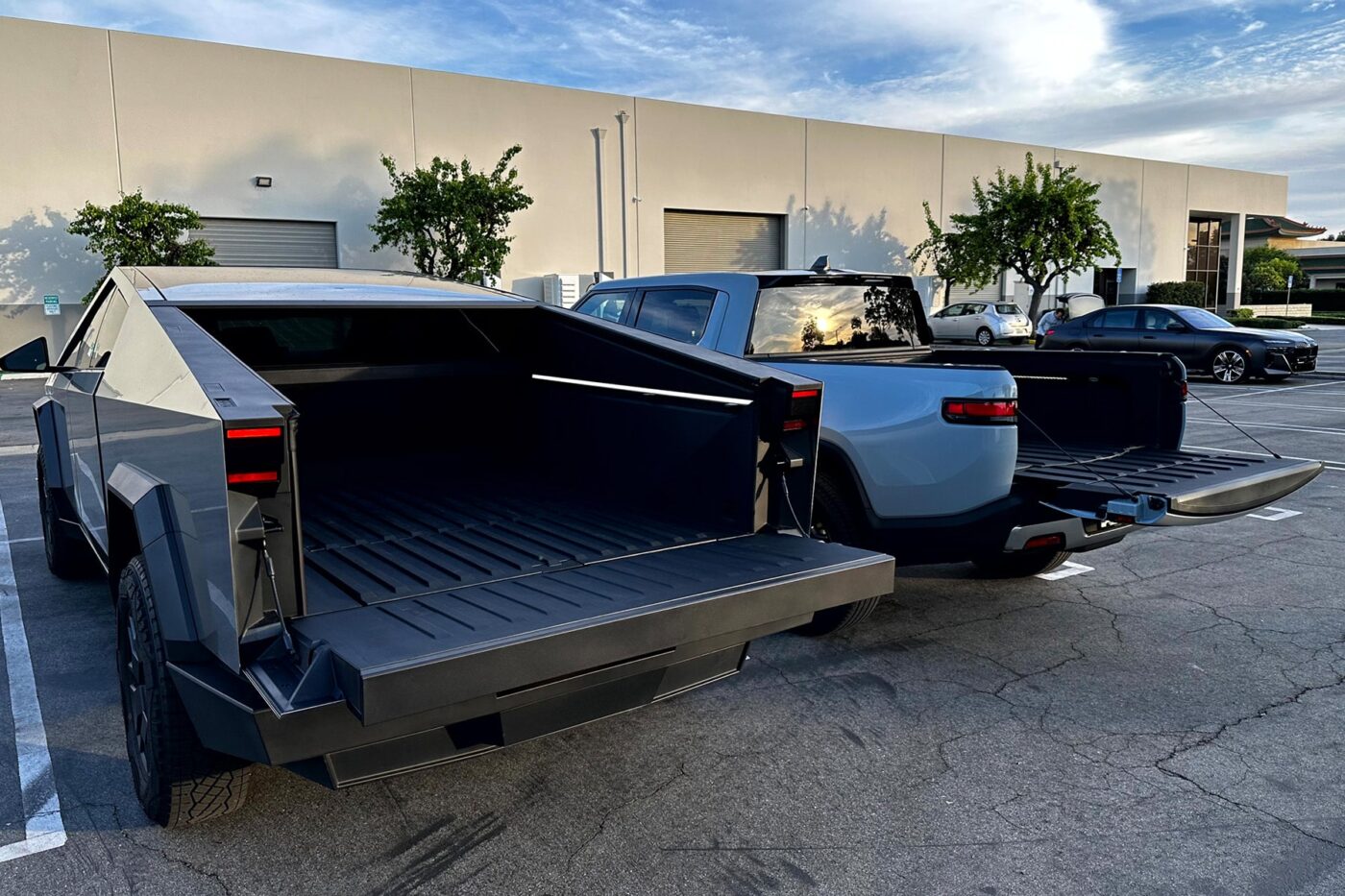
A brief note on the Cybertruck’s lighting, as we’ve often been asked about it in Germany. It’s important to clarify that the distinctive, continuous light strip at the front of the vehicle is only the daytime running light, which shines particularly brightly but is essentially just for show. The main headlights with low and high beams, as well as the indicators, are located about half a metre below, between the frunk and the black bumper, slightly recessed and well hidden.
The Cybertruck Is for True Polishing Enthusiasts
One of the most discussed aspects of the Cybertruck is undoubtedly the body’s surface: our Cybertruck was unpainted, and the bare stainless steel, as seen in official images, makes a strong first impression—this also applies to the black Cybertruck. However, as impressive as the body looks at first glance, the more you look, the more “issues” become apparent. After two days of testing, every fingerprint we left on the body is still visible. Light scratches in the surface structure and tarnished, spotted metal are also noticeable. It remains to be seen how this will look after a few months or years. Anyone wanting to protect the Cybertruck from corrosion and scratches has their work cut out and owns a vehicle for true polishing enthusiasts.
What also caught our attention—and unfortunately entirely negatively—are the edges and transitions of the body panels at the seams and the frunk: all the edges are sharp and not rounded. Running a finger along the panel gaps could almost cut you. The angular front hood is also sharp-edged at right angles. In our view, this alone is reason enough for the Cybertruck to remain unsuitable for Europe and be confined to the American market, as active and passive pedestrian protection is virtually non-existent, posing a real danger to pedestrians, cyclists, and other drivers. To date, there is no official crash test from the USA, only footage from a Tesla-internal test.
Speaking of the front hood: behind the massive front hood, which opens fully, is a large frunk that is open at the front (like the Ford F-150 Lightning), meaning you have to be careful that nothing falls out. More importantly, the frunk closes with considerable force, as evidenced by numerous videos circulating online. Testers placed a carrot between the frunk and the body as the front hood closed. In the end, the front hood cuts the carrot in two—what if an arm or hand were in the way? Unthinkable.

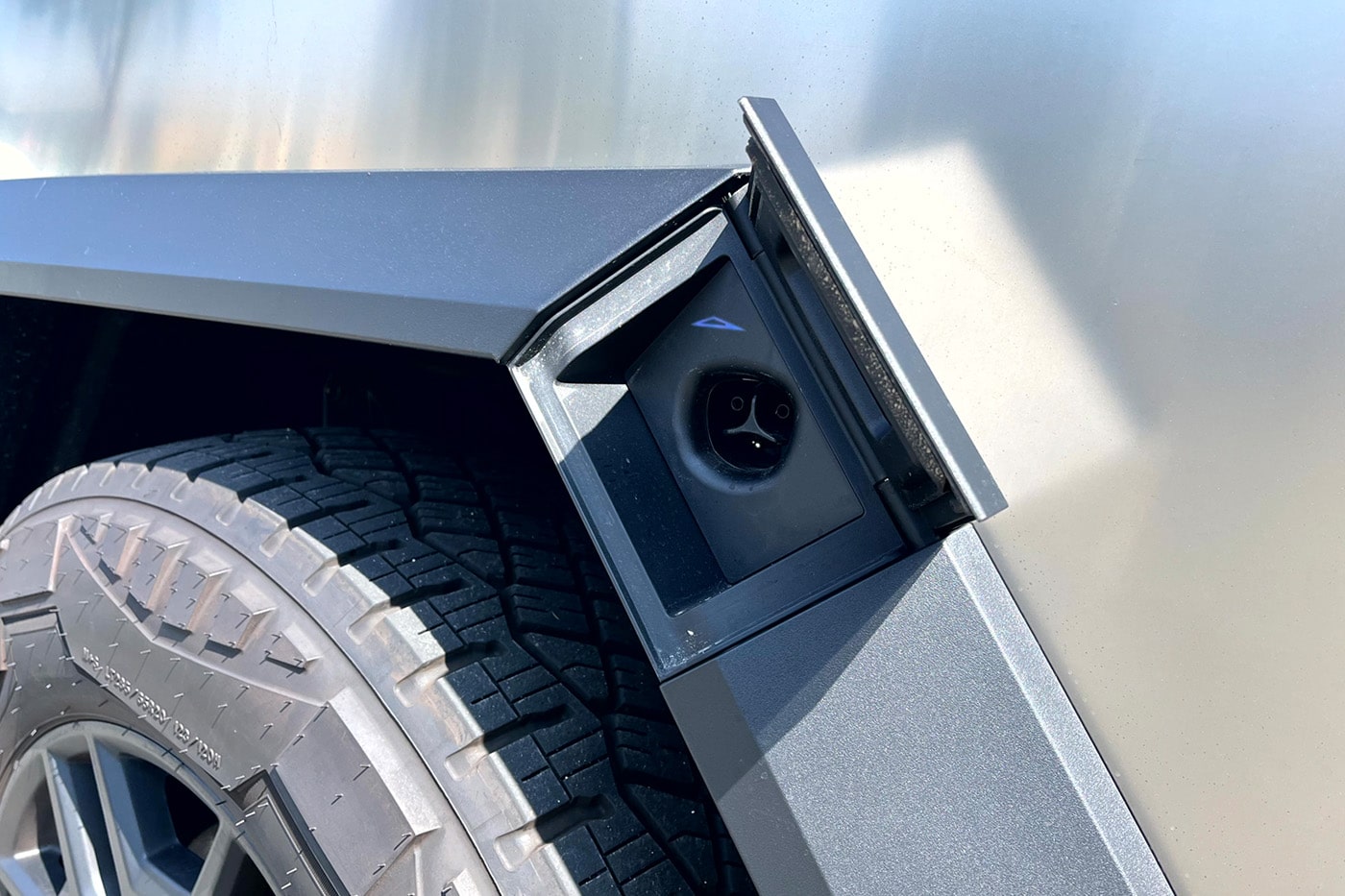
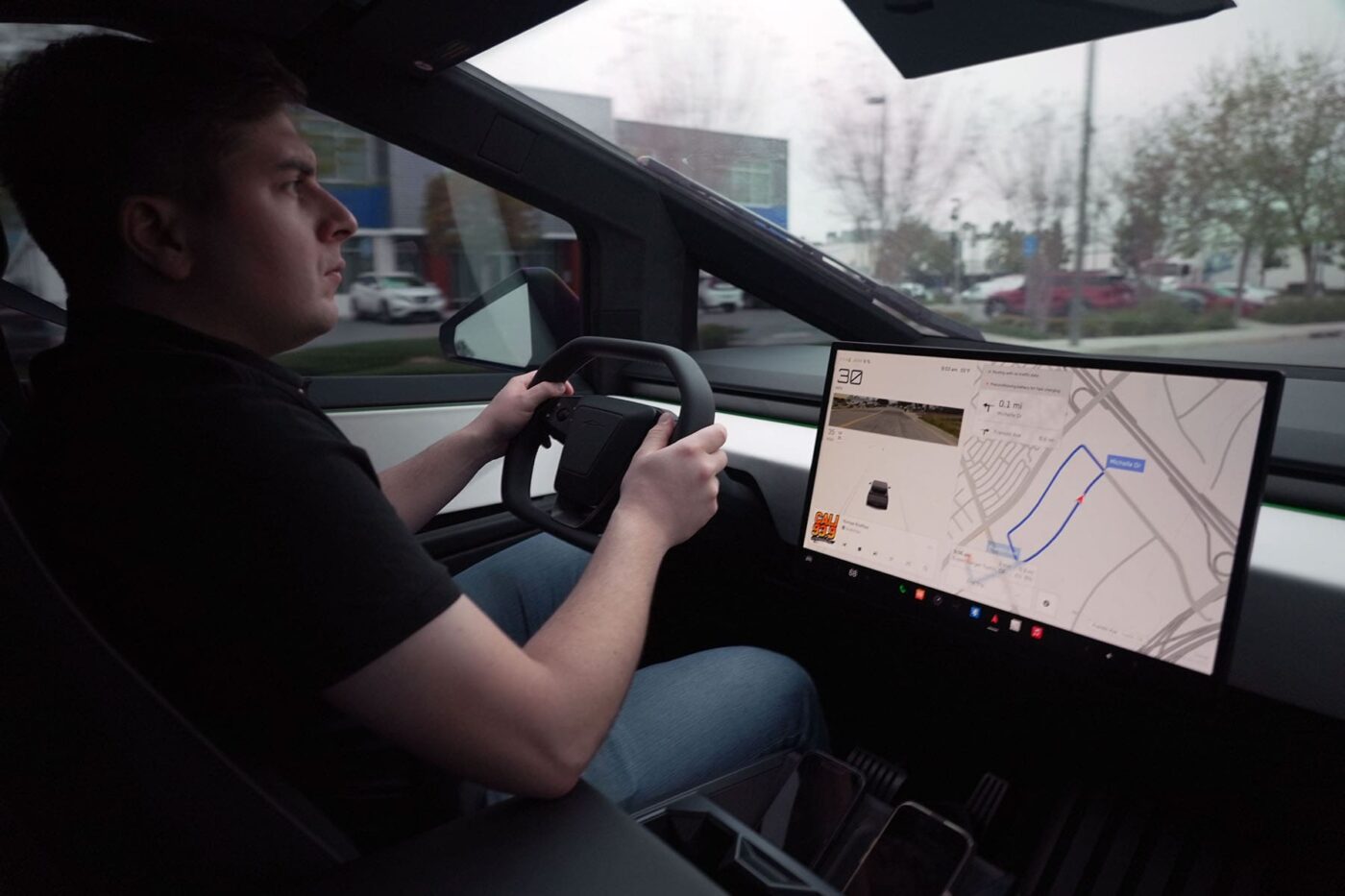
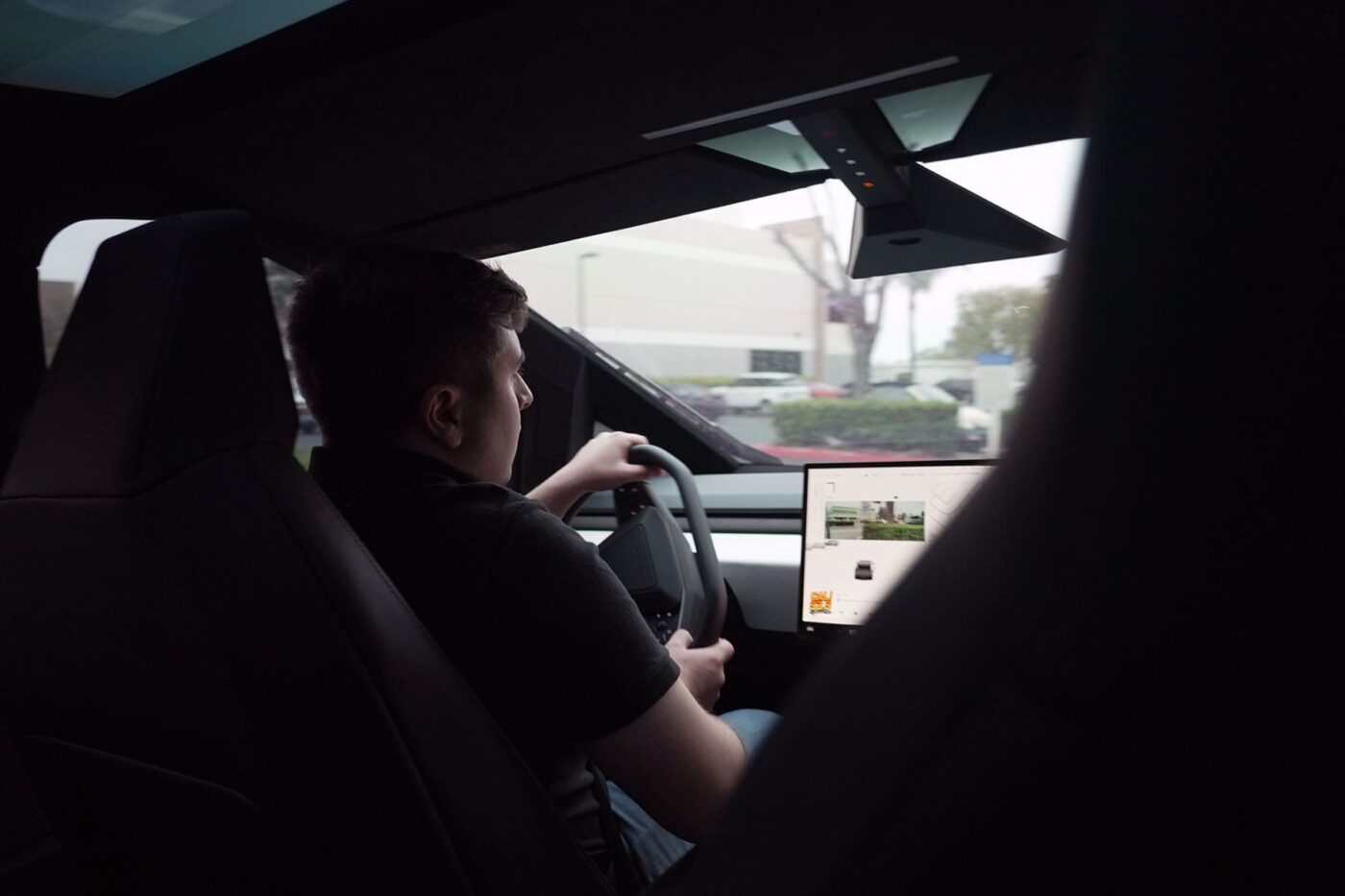
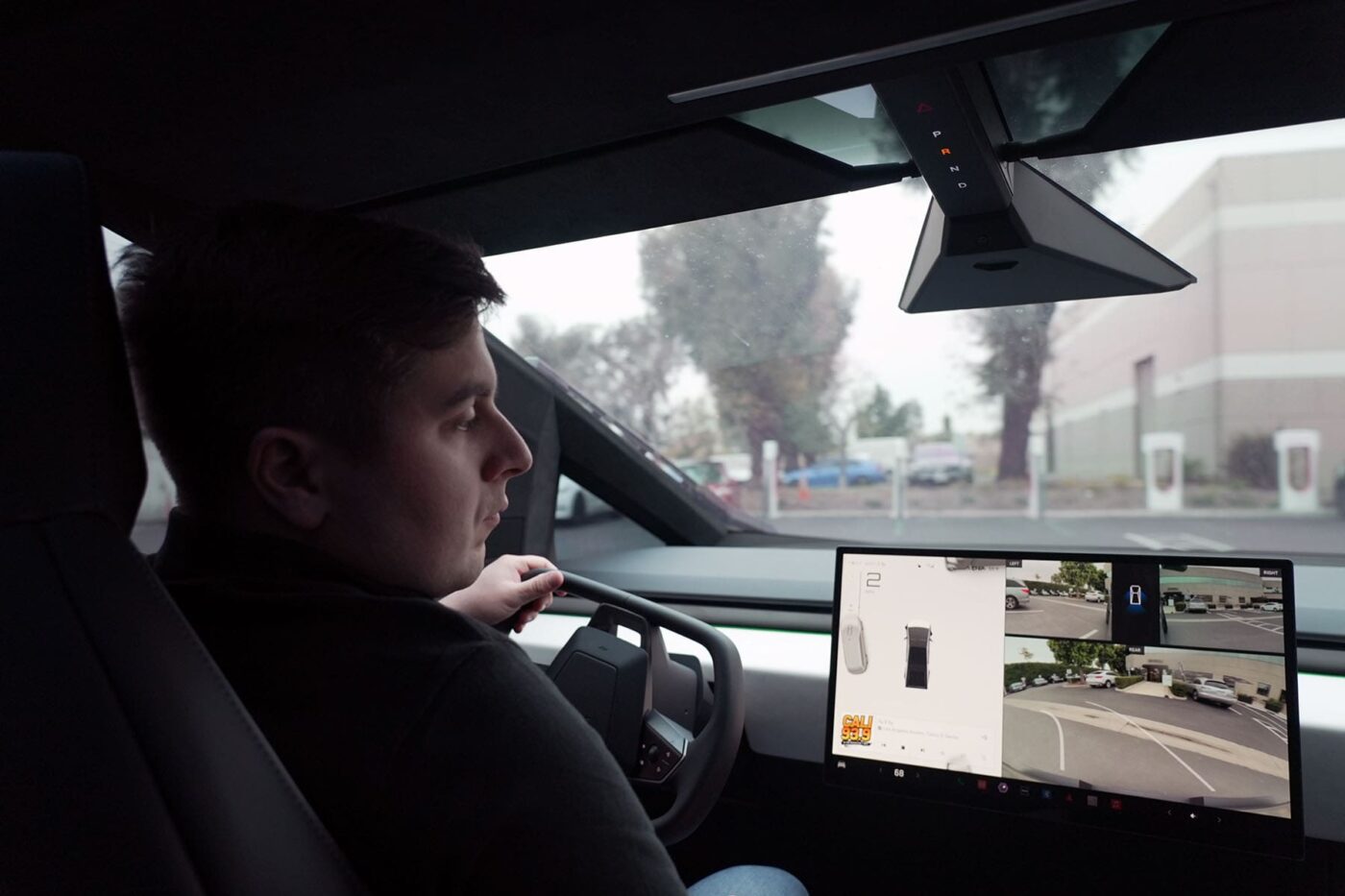
The fitted off-road tyres lead to higher consumption in everyday use, and the rolling noise is hard to ignore. Overall, this means the only advantage is the “cool” look, as the tyres actually result in comfort losses, which we also notice on the not always perfect roads and highways in the Californian metropolitan area. Another issue, though hopefully less relevant in sunny California, is the windshield wiper, which covers the entire windshield with a single blade. It is incredibly loud when changing direction because, as the pressure side of the rubber lip switches across the entire length of the wiper from left to right, a loud, deep crack is heard, amplified by the large windshield. Not pleasant.
The Cybertruck is marketed as a pickup. However, it lacks the practical properties of a traditional pickup: the large load area is not particularly practical, and while the sides that rise towards the front look good, they make loading and transporting items rather impractical. There are many tie-down points and power outlets on the truck bed. The tonneau cover seems more like a design accessory—you have to open it every time to use the load area. When closed, it’s dark towards the rear, and the existing rear window is completely redundant.
Conclusion
One thing is clear: the Cybertruck is a vehicle the world doesn’t need, and it provokes. But it excites people. We were often approached, photographed, and admired. A car that stands out and polarises in LA’s dense traffic. We were impressed by the steering and overall driving behaviour. Consumption and range are comparable to the competition and practical for everyday use at 400 miles. We had hoped for more from the charging, though this might change when the Cybertruck can charge at 800-volt or 1,000-volt chargers.
What will stay with us negatively is the visibility, perceived quality, and everyday practicality of the pickup. We were also disappointed by the assistance systems and connectivity. In Europe, we will likely never be able to officially purchase or drive the Cybertruck, as crash safety—particularly protection for other road users—and its weight (4.2 tonnes maximum permissible gross weight) will prevent it from being certified as a passenger car. It’s also clear that, at 2.4 metres wide, the Cybertruck is almost as wide as a truck and, in our opinion, simply too large for European roads.
In conclusion, we can only say: if you want to stand out in traffic, the Cybertruck is the right vehicle for you. Our test vehicle had a new price of around $100,000—a lot of money, but Americans clearly value their status symbols. We park the Cybertruck back in the same spot where we picked it up. Then we get back into our BMW i7 xDrive60 and drive towards the hotel, realising how quickly we’d adapted to the Tesla’s steer-by-wire steering. On the way back to the hotel, we blend into LA’s rush-hour traffic on the five-lane highway, barely noticeable among all the other cars. In the actually eye-catching 7 Series BMW, no one takes photos, gives us a thumbs up, or brakes for us—how pleasant.
Author: Marian Cammerer, P3 Group GmbH

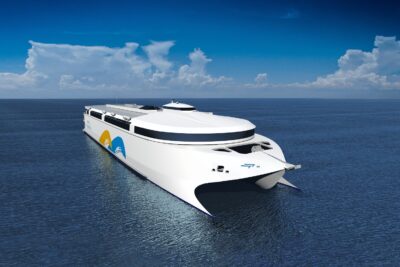


0 Comments